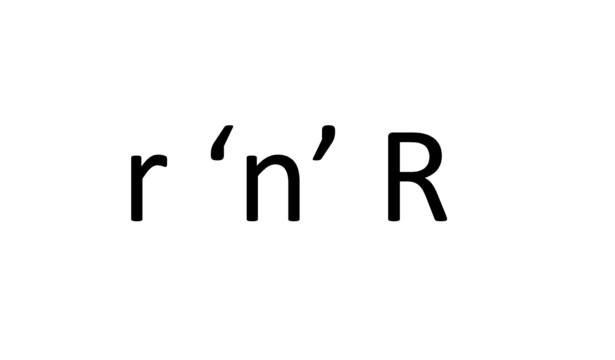The term ‘research’ is used in many ways, for example “I’m doing research about which car to purchase.” Such research is very helpful. The information found is likely new to you, but not to the auto industry. In academic circles we use the term ‘Research’ in a more restricted sense with an ambition, at the higher levels, to do something significant; to find what was previously unknown or to create what previously did not exist. Different types of research are valuable, but I think it is important to be clear about the different usages of the term.
“Small r” research is the type of discovery and acquisition of knowledge, skills and techniques that are new to the investigator (student) but already known to the field (discipline). It is about learning and gaining competency in established areas. “Big R” research is about the discovery or development of knowledge, skills or techniques new to the field. This type of research is designed to push the boundaries of what’s known or been done before, to innovate rather than imitate, and to progress culture, provide new insights, or open up new technological and social opportunities. As students move through the University education system we expect the balance between these two to shift. As depicted in a simplified form in this diagram.

In undergraduate ‘research,’ students are largely discovering for themselves things that are widely known in the field, but this does not preclude them from having novel insights nor of discovering this knowledge through their own experience and experimentation. In higher degree research, such as Masters and Doctoral programs, the balance shifts toward big-R research and there is an expected increase in the capacity to do independent work and to make a contribution to the field.
Research methods may be similar for small-r and big-R research but the area of investigation for big-R projects is carefully chosen to afford novel insights and new understandings. This classification is like Margaret Boden’s types of creativity; P-creative (personal creativity – inventive with regard to the person’s previous activities) and H-creative (historical creativity – inventive with regard to humanity’s previous efforts). A similar, and even closer parallel, is a distinction drawn by Howard Gardner between “little c” and “big C” creativity. The former being the type of creativity we all engage with in our daily lives and the latter being the kind of breakthrough that occurs only very occasionally. We need, in these discussions, to be clear about the difference between sources of knowledge (primary and secondary), research approaches (methods), and the novelty of the knowledge (discovery and rediscovery). The focus, for this distinction, is on the uniqueness of the insights that research produces; about the new knowledge generated. It is possible to arrive at insights and/or to express or communicate them in many ways, including through introspection, observation, artistic practice, reading, writing, discussion, measurement, mathematic proof, computer simulation, and so on.
Advancing one’s research capability usually includes getting good at one or more of these methods of inquiry and communication. However, methodological competency does not guarantee big ‘R’ outcomes even though it makes it more likely. Choosing an appropriate investigative focus is critical because operating at the leading edge (top) of a field is much more likely to result in big ‘R’ outcomes. Other success strategies include asking the right questions, looking in the right places for answers, understanding ‘what’s next’ in a discipline, and so on.
My distinction between small ‘r’ and big ‘R” research was originally drawn in an article co-written with Andrew Sorensen where we were reflecting on our live coding practice as research and, through that lens, on artistic research more broadly where we frequently saw a struggle (and confusion) between various uses of the term ‘research.’
Brown, Andrew R. & Sorensen, Andrew C. (2009) “Integrating Creative Practice and Research in the Digital Media Arts.” In Smith, Hazel & Dean, Roger (Eds.) Practice-led Research, Research-led Practice in the Creative Arts. Edinburgh University Press, Edinburgh, pp. 153-165.

